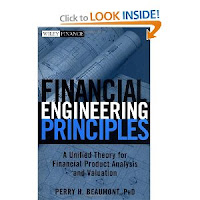The Geometry Of Stock Market Profits

This book is about Jenkins' proprietary techniques, with major emphasis on cycle analysis, how he views and uses the methods of W. D. Gann, and the geomery of time and price. Among the many topics, you will learn:
1. Which angles are important and how to draw them correctly.
2. How professional traders think and the types of strategies they use day to day.
3. How to place stops correctly.
4. How to construct and use Gann Squares for analysis and forecasting of individual stocks and commodities.
5. How long the basic trend can be expected to last.
6. When and where to buy and well
7. How to utilize Gann angles and methods that predict exact turning points with high probability.
8. The numerological interrelationships of price and time forecasting.
9. Ten trading tips to make you rich.
This book is a trading classic and you will treasure the contribution it will make to your trading proficiency and profit.
The companion book, Chart Reading for Professional Traders, was written a year later.
http://www.mediafire.com/view/?lusiz9vmqm6z08x
http://www.ziddu.com/download/21358250/etryOfStockMarketProfits-Isbn.mabroke.blogspot.com.pdf.html
Gilmore - Market Geometry 2

Bolume II of this set is out of print and no longer available, which makes this volume even more valuable.
http://www.mediafire.com/view/?69oslz3md6u951m
http://www.ziddu.com/download/21361985/Gilmore-MarketGeometry2.mabroke.blogspot.com.pdf.html
John Wiley Sons-Financial Engineering Principles A Unified Theory for Financial Product Analysis and Valuation

Stock, bonds, cash . . . the investment mind is often programmed. The reality is that most investors think in terms of single asset classes, and allocate money to them accordingly. The unique contribution of First Principles: An Investor's Guide to Building Bridges Across Financial Products is that, for the first time, a single unified valuation approach is available to use for all financial products. This book shows you how to focus on the dynamics of processes and interrelationships of different investment choices, providing the reader with a financial toolbox to equips any investor with the knowledge to de-construct and value any financial product, making it a must if you?re a portfolio manager or an individual investors interested in building the optimal portfolio.
http://www.mediafire.com/view/?h3j4njcyue3cyux
http://www.ziddu.com/download/21362013/alProductAnalysisandValuation.mabroke.blogspot.com.pdf.html
Financial Engineering

Bestselling author Salih Neftci presents a fresh, original, informative, and up-to-date introduction to financial engineering. The book offers clear links between intuition and underlying mathematics and an outstanding mixture of market insights and mathematical materials. Also included are end-of-chapter exercises and case studies.
In a market characterized by the existence of large pools of liquid funds willing to go anywhere, anytime in search of a few points of advantage, there are new risks. Lacking experience with these new risks, firms, governmental entities, and other investors have been surprised by unexpected and often disastrous financial losses. Managers and analysts seeking to employ these new instruments and strategies to make pricing, hedging, trading, and portfolio management decisions require a mature understanding of theoretical finance and sophisticated mathematical and computer modeling skills.
Important and useful because it analyzes financial assets and derivatives from the financial engineering perspective, this book offers a different approach than the existing finance literature in financial asset and derivative analysis. Seeking not to introduce financial instruments but instead to describe the methods of synthetically creating assets in static and in dynamic environments and to show how to use them, his book complements all currently available textbooks. It emphasizes developing methods that can be used in order to solve risk management, taxation, regulation, and above all, pricing problems.
This perspective forms the basis of practical risk management. It will be useful for anyone learning about practical elements of financial engineering.
* Exercises and case studies at end of each chapter and on-line Solutions Manual provided
* Explains issues involved in day-to-day life of traders, using language other than mathematics
* Careful and concise analysis of the LIBOR market model and of volatility engineering problems
http://www.mediafire.com/view/?1c5gvdg5y2o7snr
http://www.ziddu.com/download/21362045/FinancialEngineering.mabroke.blogspot.com.pdf.html

